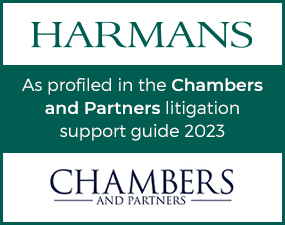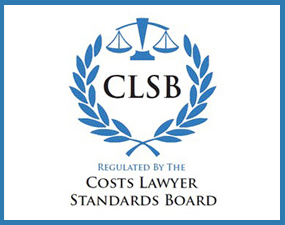Summary of the Civil Courts Structure Review interim report from Lord Justice Briggs
This is an interim report from Lord Justice Briggs following informal consultation. It was commissioned by the Lord Chief Justice and the Master of the Rolls in July 2015 to coincide with a programme for reform of the courts by Her Majesty’s Courts and Tribunals Service (HMCTS) and looking at civil court structures and judicial processes more generally.
It is intended that a larger, more formal process of consultation will be completed by the end of May 2016. Written responses are invited not later than the end of February 2016, and Lord Justice Briggs will hold a programme of meetings from March to May. He will complete this review by the end of July 2016.
He is supported by a small team of other judges and officials, and expresses his thanks both to them and to all those consultees who contributed to the first round of his review.
The report gives a series of mainly provisional views and raises a series of questions.
Urgent Priorities
- Prepare the civil judiciary to play their part in the management of the HMCTS reforms from April 2016, including Judicial College training and staff to support the leadership judges.
- As soon as possible design the structure and software which will be needed for the re-organised courts, particularly the Online Court.
- Ease the burden on the Court of Appeal. Proposals are already due to be made in April 2016 but the report seeks further suggestions.
Online Court: (see Chapter 6)
Provisional View:
- There is a clear and pressing need to create an Online Court for claims up to £25,000 designed for the first time to give litigants effective access to justice without having to incur the disproportionate cost of using lawyers. There will be three stages: Stage 1- a largely automated, inter-active online process for the identification of the issues and the provision of documentary evidence; Stage 2 – conciliation and case management, by case officers; Stage 3 resolution by judges. The court will use documents on screen, telephone, video or face to face meetings to meet the needs of each case.
Questions
- Should the Online Court be separate court with its own bespoke rules, or a branch of the County Court, mainly governed by the Civil Procedure Rules? The report favours the first option.
- Which types of claim which should be included, or excluded, if £25,000 is the ceiling?
- How much and what types of assistance with IT will needed for court users?
- How much if at all should one side’s costs be paid by the other side?
- Should any appeal be to a Circuit Judge?
Case Officers (see Chapter 7)
Provisional View
- Transfer some of judges’ more routine and non-contentious work to Case Officers supervised by judges. Parties should have the right to have a Case Officer’s decision reconsidered by a judge.
Questions
- Should conciliation offered by Case Officers be based on simple telephone mediation, or written early neutral evaluation, or a mixture of the two?
- How to draw a practicable but flexible line between routine case management, suitable for Case Officers, and the more discretionary type calling for judicial expertise and authority?
- What should be the specialisation, qualification, training and experience of Case Officers?
- What should be the nature of the right to have a Case Officer’s decision reconsidered by a judge?
Number of Courts and Deployment of Judges (See Chapter 8)
Provisional View
- There should not be a move to unified civil court ahead of the implementation of the Reform Programme.
- There should be a stronger concentration of civil expertise among the Circuit Judges and District Judges.
- All civil work with a regional connection should be tried in the regions, regardless of value, subject to very limited specialist exceptions such as Patents.
- A way must be found to prevent the permanent loss of civil hours to meet the needs of urgent family cases.
Questions
- How can more of the High Court’s workload be directed towards the County Court by changing the current value limits and thresholds?
- What structural means would reinforce the principle that no case is too big to be resolved in the regions?
- How can the growth of regional centres of civil specialist excellence be fostered, to avoid the current tendency of regional cases to be issued in, or transferred to, London.
- How can the current systems for the transfer out of London of cases more appropriately managed and tried in the regions be improved?
- How can greater civil expertise be concentrated among the Circuit Judges and District Judges?
- Should the number of District Registries be reduced further or the concept be replaced altogether?
- Will the current number and geographical distribution of the Designated Civil Judges best serve the civil court structure as it emerges from the Reform Programme?
- Should the fault line between the Chancery and Queens Bench Divisions within the Rolls Building be addressed, and if so how?
- Would a different structure allow the civil courts to respond more quickly and flexibly to sudden changes in the make up of the civil workload?
Rights and Routes of Appeal (see Chapter 9)
Questions
- When permission to appeal has been refused on the documents, there is a right to the renew it orally. How valuable is this?
- Would a substantial increase in the use of deputies in the Court of Appeal, or the use of two judge courts in place of the current three, reduce the actual or perceived quality of the decision making?
- Should the thresholds for obtaining permission to appeal be raised, and if so by reference to what criteria?
- Should the focus of the Court of Appeal be directed mainly to second appeals?
- How should space be made in the workloads of High Court judges to let them provide more assistance to the Court of Appeal, both as deputies and by giving more appellate jurisdiction to the High Court?
Enforcement (Chapter 10)
Questions
- Should the enforcement of judgments become a unified service for all the civil courts?
- Which features of the current County Court and High Court enforcement procedures should be replicated or developed in a unified service?
- Will digitisation and automation enable better enforcement?
- Should all methods of enforcement be centralised as far as possible?
- Should there be a default assumption that judgments for payment of money (if not complied with) should no longer leave the creditor to have to take the initiative for the purposes of obtaining information about the debtor’s assets and resources?
Boundaries (see chapter 11)
Question
- Might the Employment Tribunal and Employment Appeal Tribunal be integrated into the structure of the civil courts.
For those interested in responding the full report can be found here:



